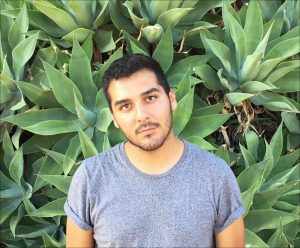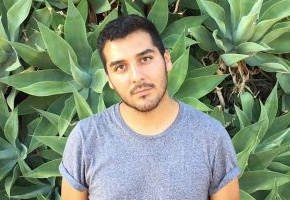 David Osorio-Vera is a CSUN student who recently curated the Queertonal: Exploring the Lives of Queer Musicians through Time exhibit which is now on display in the Oviatt Library’s Music & Media Department. We asked David about how this exhibit developed, and what he hopes it will contribute to the campus community. The exhibit will run until mid-May.
David Osorio-Vera is a CSUN student who recently curated the Queertonal: Exploring the Lives of Queer Musicians through Time exhibit which is now on display in the Oviatt Library’s Music & Media Department. We asked David about how this exhibit developed, and what he hopes it will contribute to the campus community. The exhibit will run until mid-May.
What year CSUN student are you and what is your major?
David: I am a Senior Music Education student minoring in Queer Studies.
What inspired you to develop the exhibit?
David: I enrolled into my first queer studies course in the Fall of 2016. The course, Queer Pop Icons, impacted me greatly and it was an opportunity for me to engage for the first time in conversations about Queerness in music. Although it was an amazing course with the most intelligent professor, it was only just one course that combined the two subjects, and since then I have struggled to navigate back and forth between music and queer studies. I constantly looked for a bridge to connect both Queer Studies and Music at CSUN, and I felt that I needed to organize or create something before leaving this institution that Queer and Trans student musicians like myself could find some kind of representation and connect a bridge for themselves. Then, one day during my shift at Music & Media, I saw the Jack Kirby exhibit on display and instantly developed an idea to create an exhibit of my own. Queertonal was born.
How do you define ‘queer’ as it relates to these musicians?
David: On display are musicians selected from multiple eras and genres of music, from 17th Century Baroque, to modern-day Hip-Hop. I have learned that many of these musicians lived through eras when any act that challenged the heteronormative was unlawful, and terms like “sodomite” and “pederast” were used to label and degrade them. The term Queer, therefore, is respectful, and inclusive to all of the displayed musicians from various eras where their identities were suppressed.
What role, if any, does sexuality play in music?
David: Sexuality has played a significant role in music long before rappers today rapped about their queer identities and experiences. Take Tchaikovsky’s Symphony No. 6, Symphonie Pathetique, for example. Scholars and Musicologists believe that it was inspired by his homosexuality which he constantly tried to repress in strictly traditionalist 19th-Century Russia. As he continued to deny and repress his identity, Tchaikovsky became extremely depressed and completed the piece shortly before his death. Some say it was his farewell symphony where he also revealed his true self. I can confidently conclude that whether the role sexuality plays in music is as heartbreaking as it was for Tchaikovsky, or to inspire Frank Ocean for lyrics for music of today, sexuality has and will continue to inspire musicians and their music.
How did you select the musicians who are included in the exhibit?
David: I had known of some Queer and/or Trans-identified musicians that are included in the exhibit, like, Tchaikovsky, Saint-Saens, and the modern musicians, but I had to research other musicians who were “rumored-to-be” before I finalized the decision to put them on display.
What do you hope people take away from experiencing this exhibit?
David: I hope visitors learn about the important narratives of these musicians that music history curriculum lacks, but most importantly, I hope that other queer and/or trans-identified, classically-trained musicians like myself find representation in these musicians and become inspired to continue to perform their works proudly, and unafraid.



